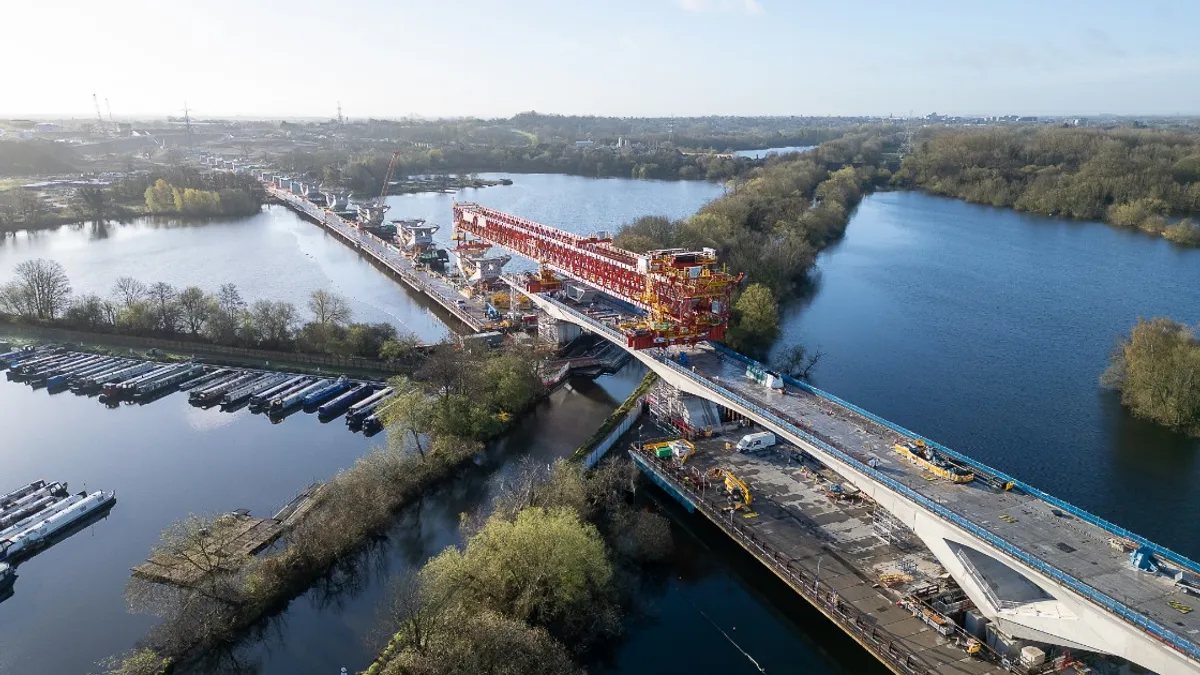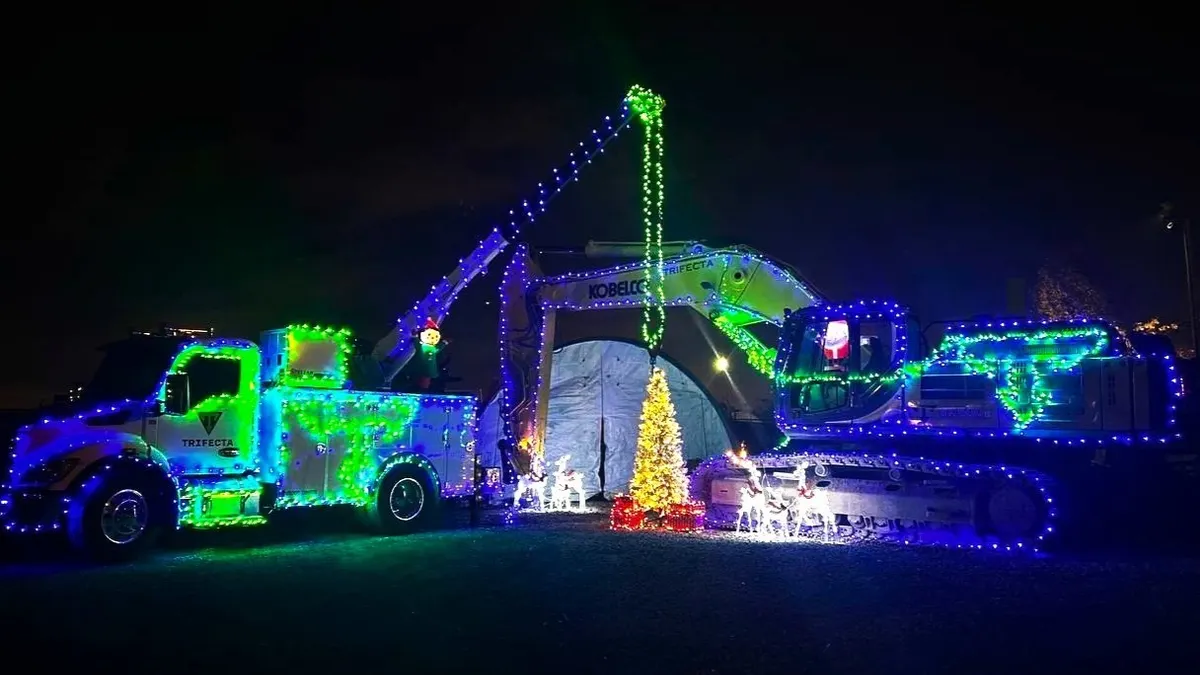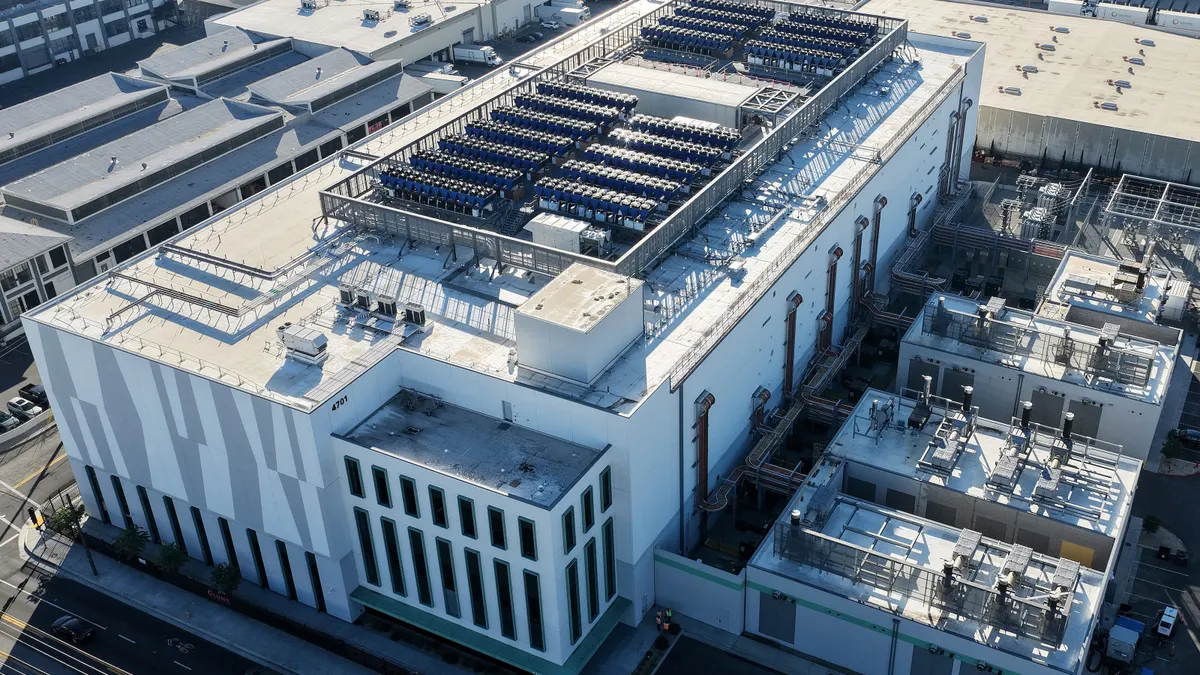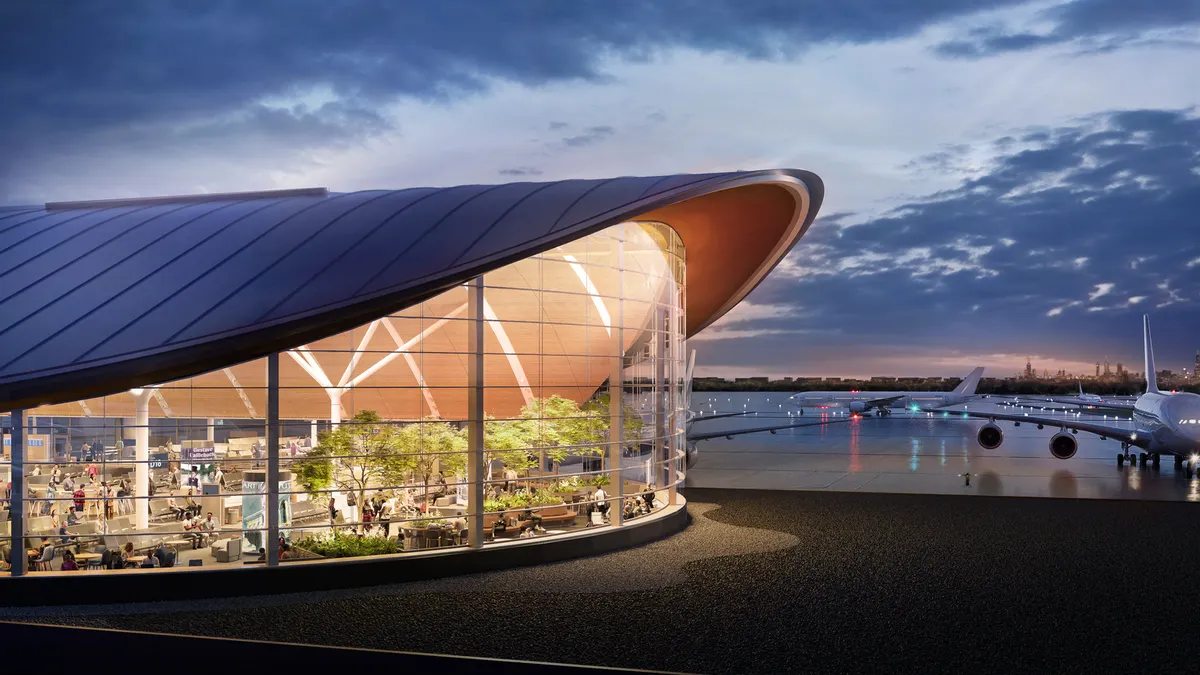This feature is part of a series that takes an in-depth look at drones in construction. To view other posts in the series, check out the spotlight page.
Just when you thought drones couldn’t get any more buzzworthy, the Federal Aviation Administration announced on March 21 that it expects commercial drone usage to expand 10-fold in the next five years. Along with agriculture and mining, construction has been a key industry for drone makers as well as UAV software and service companies.
Still, the sheer number of new entrants to the construction drone and drone-as-a-service (DaaS) arena can leave even the best contractor overwhelmed with what can otherwise be a simple, low-cost process for getting airborne with drone technology.
To provide a quick-start primer on UAVs, Construction Dive checked in with David Shearer, the vice president of marketing at Menlo Park, CA–based Kespry, a maker of drones, drone hardware and software, and services for several industries including the AEC sector. From getting licensed to crunching aerial imagery data, here’s everything you need to know for a smooth takeoff and landing with drones in construction.
The Wild West: A brief history of flight
Unmanned aerial flights can be traced back to the 1800s, and drones per se have been actively used by the U.S. and other military forces since the Vietnam War. When it comes to commercial usage, the timeline is much shorter, with major drone manufacturers like DJI coming online to serve the hobbyist and generalist markets in 2005 and thereafter.
But even as the popularity of drones increased, commercial applications were largely disapproved by the FAA, until the Federal Aviation Administration Modernization Act in 2012 mandated the agency build a framework to allow commercial UAV flights by 2015.
While the agency worked on establishing a set of standards, commercial drone enthusiasts continued to probe the application limits for drones in agriculture, entertainment, mining and construction, surreptitiously conducting flights under the radar of the FAA.
"Until the FAA adopted its current framework, using drones for commercial or industrial applications was a bit of a Wild West," Shearer said. "The companies that were using drones in that window wanted to be progressive and improve their business but did not know where they stood from a legal perspective until the FAA put some guard rails down for people to work within the law, which has acted as an accelerant to drone technology adoption."
Airframes: Micro-drones, quadcopters and fixed-wing UAVs
Similar to manually piloted aircraft, drones come in all shapes and sizes, from extremely lightweight micro-drones that can stream HD video but still fit in the palm of your hand, to the 66-foot wingspan of the MQ-9 Reaper used by the military for reconnaissance and hunter-killer missions. Construction professionals are most likely to encounter some version of the quadcopter, usually outfitted with advanced imaging equipment and built with a more rugged airframe to withstand harsh job site conditions.
"The average consumer drone build is not designed for rough terrain and loose material and exposure to the elements and extreme wear and tear," Shearer said.
Shearer said that fixed-wing drones in construction have been limited to specific types of projects that generally tend to cover larger areas and are not restricted by confined take off and landing spaces. "The advantage with fixed-wing is faster coverage of long distances, so we’ll likely see use cases emerge with projects like pipelines and long infrastructure runs," Shearer said.
The FAA and Part 107
Before the FAA began broadly allowing commercial drone flights in 2016, exceptions had to be approved on a case-by-case basis by the agency, and the controls had to be in the hands of a licensed aircraft pilot. With the establishment of the Part 107 regulations — announced on June 21, 2016 and implemented on Aug. 29, 2016 — drone operators need only be at least 16 years of age and pass a 60-question, multiple choice flight exam to be licensed to fly a commercial UAV. From there, the flight restrictions are fairly straightforward:
- No night flyers: Flights must be conducted in daylight or twilight hours.
- See it to believe it: Operators need to keep the drone within a clear line of sight.
- Watch your weight: Drones need to weigh less than 55 pounds and have anti-collision lights.
- Avoid people: Commercial drones cannot be flown over unprotected people, or people not involved in the application at hand. For construction, flights over job sites with workers are allowed.
- Low and slow: Drone flights cannot be above 400 feet, or exceed 100 miles per hour.
- Operations in controlled class B, C, D, and E airspace require air traffic control approval and a waiver from the FAA.
"The regulations themselves have actually simplified commercial drone flights and made the space much more accessible," Shearer said. "The regulations have helped to established expectations for the expansion of use cases in AEC."
Drone imagery and analytics
The most obvious use case for construction drones is getting an eye in the sky over job sites, providing surveyors, earthmovers and project managers with an aerial view of materials, machinery and people in motion.
By analyzing drone imagery, companies are optimizing grading plans, streamlining operations, and identifying critical differences between as-designed and as-built site plans and construction. Drones can also be outfitted with thermal cameras and used for volumetric calculations of dirt, bio-mass, stone, timber and aggregate material stockpiles on the ground.
"Let’s face it, no one is into this because they want drones. They’re into it because want they want data," Shearer said. "That’s the main reason to have a drone — it is a flying robot with built-in sensors to provide you with an edge to your business in the field."
Going on autopilot
If everything drone-related still leaves some contractors with a fear of flying, the vendors feel your pain, and collectively are working on single-touch, pre-programmed drone technologies and mobile-app powered auto pilot systems to make take-off and landing easier.
"We’re entering the realm of completely autonomous flight," Shearer said. "No joy sticks, you do not have to be a master pilot, you simply give the drone a mission and it does the rest for you. The entry level for flight operations and data capture has been lowered to the point where you don’t need special skills or expertise to implement the technology."
While the FAA does still require a 107-licensed pilot to be present, single-click UAV flights have the construction industry poised to expand drone applications further into the realm of machine learning, autonomy and artificial intelligence.
"We’re focused on the three As of autonomy, artificial intelligence, and applications," Shearer said. "Simply put: how can we make drone technology for data capture as friction free as possible and still deliver high resolution, highly reliable information? There is plenty of room for the evolution of optical and aerial sensors to provide new levels of field data and intelligence. The short answer to where drone technology is headed in construction is quite simple: there is a lot of opportunity and we’re just getting started."




















